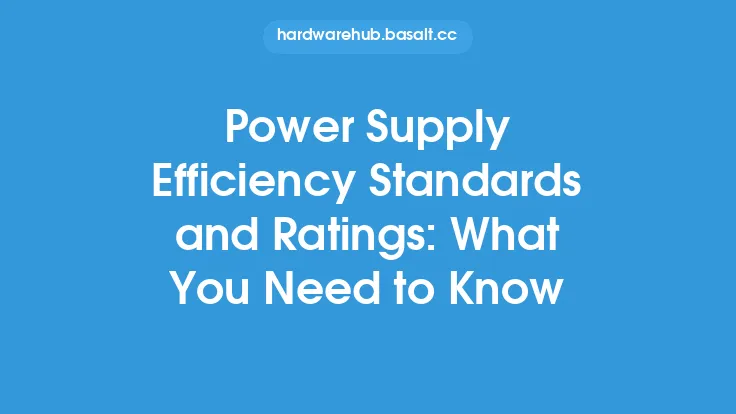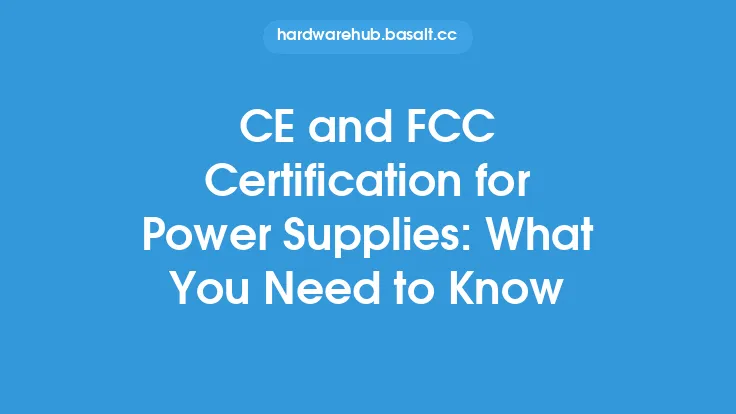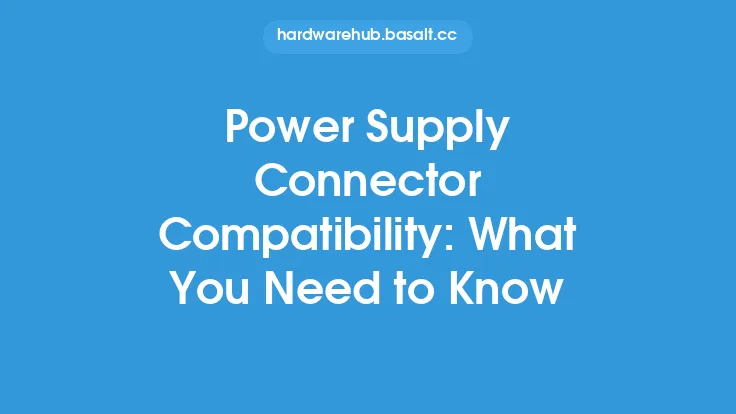When it comes to power supplies, protection features are essential to ensure the safety and reliability of the system. One crucial aspect of power supply protection is surge protection, which is designed to safeguard against voltage spikes and other electrical disturbances. In this article, we will delve into the world of surge protection in power supplies, exploring what it is, how it works, and why it is necessary.
What is Surge Protection?
Surge protection in power supplies refers to the ability of a power supply to withstand and protect against voltage surges, spikes, and other electrical disturbances. These disturbances can be caused by a variety of factors, including lightning strikes, power grid fluctuations, and equipment malfunctions. Surge protection is designed to prevent these disturbances from damaging the power supply and the connected load.
How Does Surge Protection Work?
Surge protection in power supplies typically involves the use of specialized components and circuits that are designed to detect and respond to voltage surges. These components may include surge absorbers, such as metal oxide varistors (MOVs) or transient voltage suppressors (TVSs), which are designed to absorb excess energy and prevent it from reaching the power supply's internal components. Additionally, some power supplies may employ active surge protection circuits, which use electronic components to detect and respond to voltage surges.
Types of Surge Protection
There are several types of surge protection used in power supplies, each with its own strengths and weaknesses. Some common types of surge protection include:
- Metal Oxide Varistors (MOVs): MOVs are a type of surge absorber that use a metal oxide material to absorb excess energy. They are commonly used in power supplies due to their high surge absorption capacity and low cost.
- Transient Voltage Suppressors (TVSs): TVSs are a type of surge absorber that use a semiconductor material to absorb excess energy. They are faster and more accurate than MOVs, but also more expensive.
- Gas Discharge Tubes (GDTs): GDTs are a type of surge protector that use a gas discharge tube to absorb excess energy. They are commonly used in high-voltage applications due to their high surge absorption capacity and fast response time.
- Surge Protective Devices (SPDs): SPDs are a type of surge protector that use a combination of components, including MOVs, TVSs, and GDTs, to absorb excess energy. They are commonly used in power supplies due to their high surge absorption capacity and flexibility.
Importance of Surge Protection
Surge protection is essential in power supplies due to the potential damage that voltage surges can cause. Voltage surges can damage the power supply's internal components, leading to reduced reliability and lifespan. Additionally, voltage surges can also damage the connected load, leading to equipment failure and downtime. By providing surge protection, power supplies can ensure the safety and reliability of the system, reducing the risk of damage and downtime.
Standards and Regulations
Surge protection in power supplies is governed by various standards and regulations, including:
- IEC 61000-4-5: This standard defines the test methods and requirements for surge protection in power supplies.
- UL 1449: This standard defines the requirements for surge protective devices (SPDs) in the United States.
- EN 61643-11: This standard defines the requirements for surge protective devices (SPDs) in Europe.
Best Practices for Surge Protection
To ensure effective surge protection in power supplies, several best practices should be followed:
- Select a power supply with built-in surge protection: Many power supplies come with built-in surge protection, which can provide an additional layer of protection against voltage surges.
- Use a surge protector: Surge protectors can be used in conjunction with power supplies to provide additional protection against voltage surges.
- Follow proper installation and maintenance procedures: Proper installation and maintenance of power supplies and surge protectors can help ensure effective surge protection.
- Monitor the power supply and connected load: Regular monitoring of the power supply and connected load can help detect potential surge protection issues before they become major problems.
Conclusion
Surge protection is a critical aspect of power supply protection, designed to safeguard against voltage spikes and other electrical disturbances. By understanding how surge protection works, the types of surge protection available, and the importance of surge protection, users can ensure the safety and reliability of their power supplies and connected loads. Additionally, by following best practices for surge protection and adhering to relevant standards and regulations, users can minimize the risk of damage and downtime, ensuring optimal system performance and uptime.





